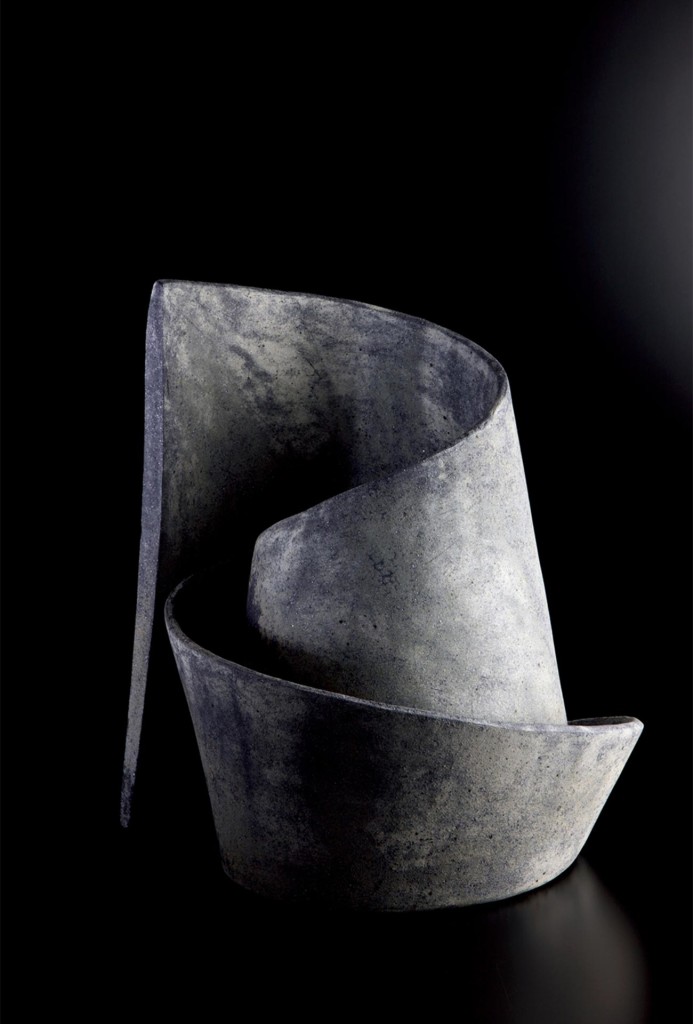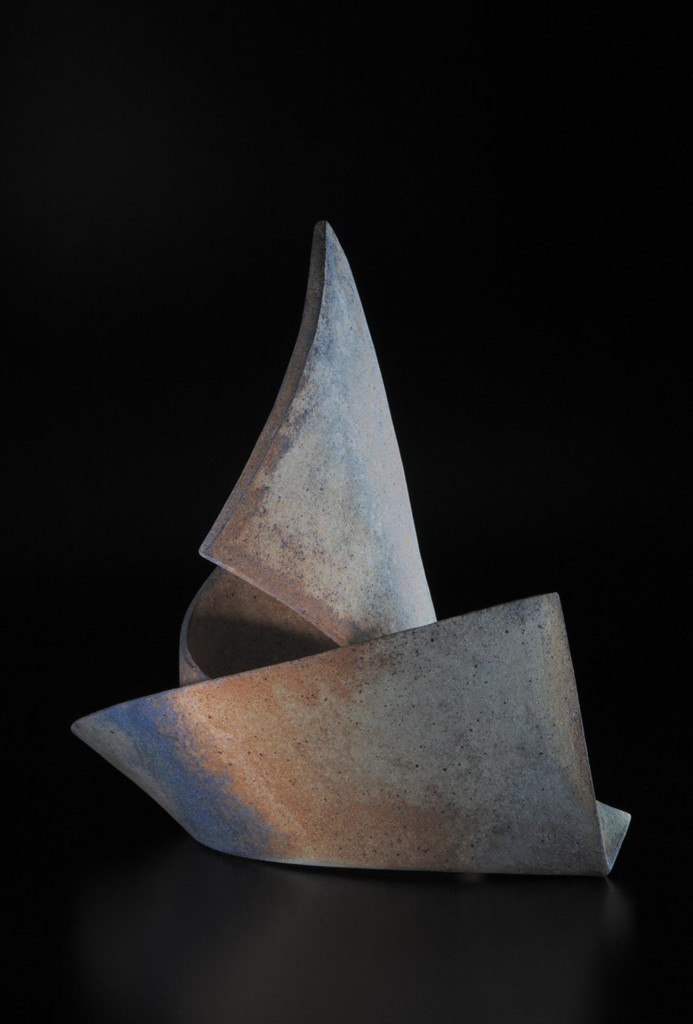The oeuvre created by Ken Mihara (*1958) is rooted in the ceramic tradition of his home country. Having trained under Kenji Funaki, one of Japan’s preeminent Mingei potters, it would have been the natural thing for him to also create folk art ceramics in the tradition of the Mingei movement. But Mihara’s creations, looking both complex and simple, are located somewhere between tradition and avant-garde, between vessels and sculptures. With their chromatically nuanced surfaces, they are reminiscent of the aesthetics of wood-fired wabi-sabi vessels, yet at the same time resemble minimalist modern sculptures, characterized by an eminently dexterous juxtaposition of curved contours and surfaces, edged and rounded outlines, sharp angles and smoothly flowing lines. Mihara digs his own clay near his studio, and fires the clay bodies for 40 hours in a gas kiln after coating them with kaolin slip. Afterwards he grinds off the kaolin crust and then fires the objects for another 40 hours, thus creating coarsely matte surfaces that look as if they’re grown naturally like lichen, their unprecedented chromatic quality lending them an aura of monumental timelessness.
His latest group of works, created in collaboration with the Yufuku Gallery, Tokyo, and showcased at Marianne Heller’s gallery, has been christened Kei/ Mindscapes by Mihara, which can be translated as ideational worlds or mental landscapes. Featuring sophisticated turns and folds, tapering to pointed tips and wedding static immobility to motion, these creations symbolize incessant contemplation. Their quality, patiently developed over a long period of time and awarded multiple prizes, testifies to an impressively high level of maturity and perfection. So it’s not surprising that prestigious museums, such as the National Museum of Modern Art in Tokyo, the Metropolitan Museum of Art in New York or the Victoria and Albert Museum in London have included ceramics created by Ken Mihara in their collections.

